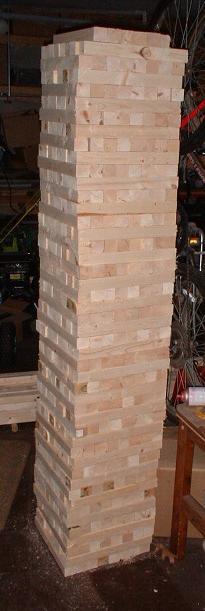
|
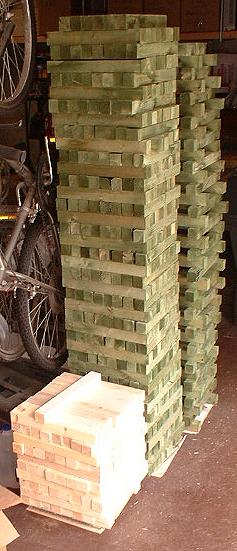
|
Ties
These are stacks of cut railroad ties being treated.
I was using a commercial product for this. My tie treating
plant was producing 24 ties a day, nonstop. This procedure
was phased out. It is less costly and easier to use
commercial pressure-treated lumber.
These ties started out as 1.5" x 1.7" x 13.625" untreated
spruce.
|
-
My track sections are 8 feet long either curved or straight.
In order to build sections that long, you need a sturdy
workbench just as long. The bench below was constructed from
lumber originally intended for ties. On the bench is a computer
generated template that shows precisely
where each tie goes within a track panel.
Note the storage of stringers underneath the bench.
-
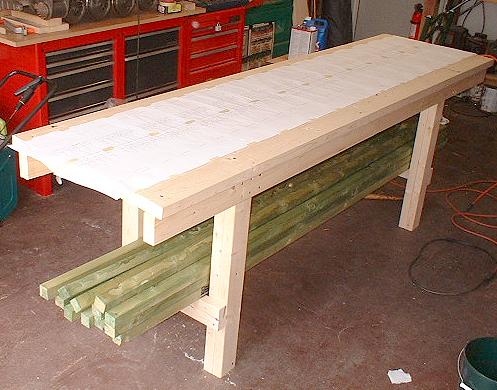
-
The photo below is a stack of track sections 8 feet
long. These have a 40 foot radius. All track sections are
built on stringers.
-

-
Something else you will need lots of ... Ballast!
-

-
Once the track sections are completed, the next task is
to lay track. Most individuals and clubs prefer to have
the rail already laid. However, most of them do not use
stringers either.
-
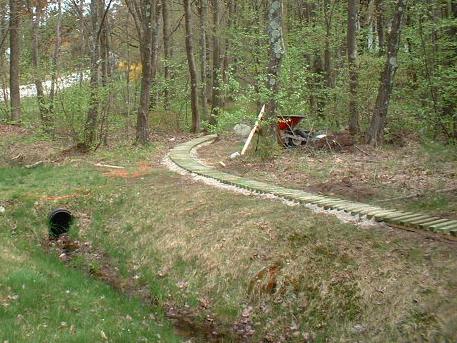
-
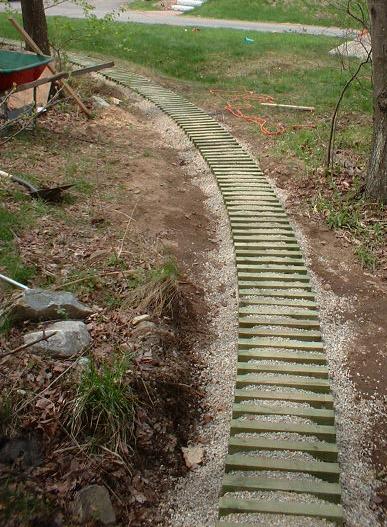
|
The first and most labor intensive task is to grade the roadbed.
This is complicated by the presence of rocks, roots, old buried
building materials, etc. You may need to remove quite a bit of
soil or borrow it from another location to create a fill.
Then the sections are layed on the earth and fastened together using
short stringers. Having the ties on stringers elevates the track off
the ground. Then ballast is poured onto the track and between the
ties.
|
-
Working all day means only completing 40 feet of track. It is going
to be a long summer.
-
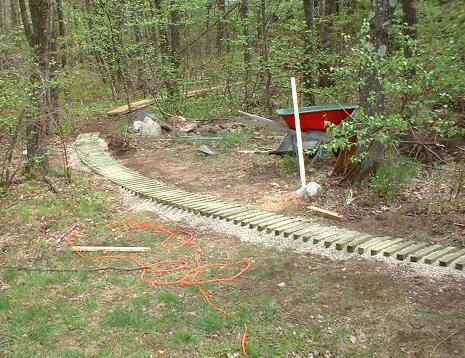
-
More Photos
Track Construction
|







